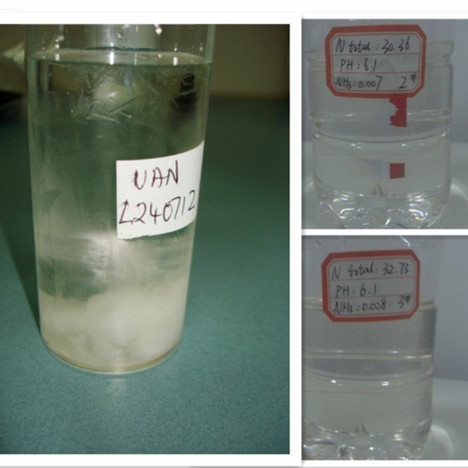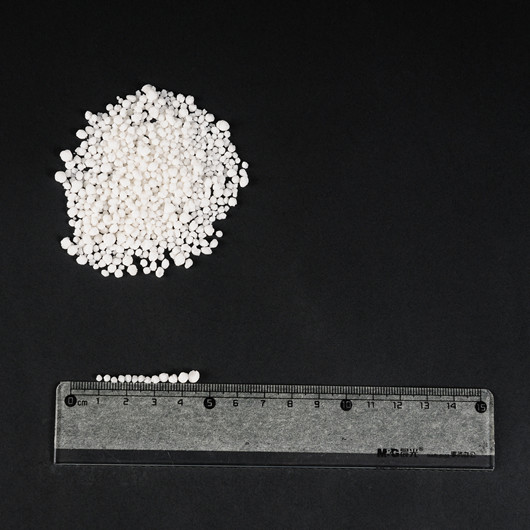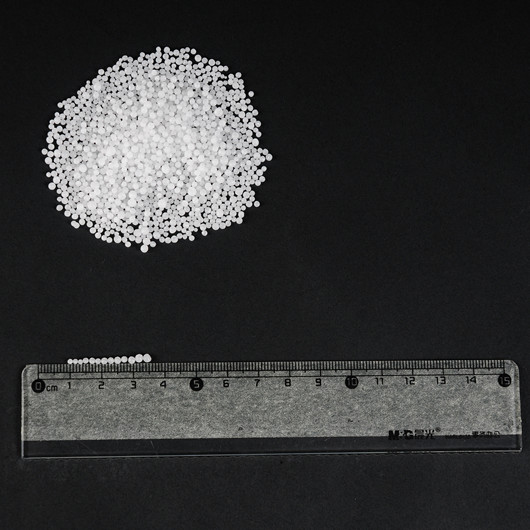Cerium Ammonium Nitrate, CAN
Cerium (IV) ammonium nitrate ((NH4)2Ce(NO3)6) is a one-electron oxidizing agent that is used for oxidative addition reactions of electrophilic radicals to alkenes, enabling intermolecular and intramolecular carbon-carbon and carbon-heteroatom bond formation. CAN also oxidizes secondary alcohols into ketones and benzylic alcohols into aldehydes.
Recent Literature

The combination of TEMPO and CAN can be used for the aerobic oxidation of benzylic and allylic alcohols into their corresponding carbonyl compounds. However, steric hindrance has been observed to impede the reaction with some substituted allylic systems. The present method is superior to others currently available due to its relatively short reaction times and excellent yields.
S. S. Kim, H. C. Jung, Synthesis, 2003, 2135-2137.


Oxidation of sulfides to sulfoxides with a catalytic amount of ceric ammonium nitrate reagent supported on silica gel has been achieved using stoichiometric sodium bromate as the primary oxidant. The heterogeneous CAN/NaBrO3 reagent enables the use of an organic solvent and simplifies the reaction work-up and product isolation.
M. H. Ali, D. Kriedelbaugh, T. Wencewicz, Synthesis, 2007, 3507-3511.

Oxidative ring expansion of methylenecyclopropanes with CAN under oxygen atmosphere was investigated. A facile conversion affording 2,2-diarylcyclobutanones occurred in good yields.
V. Nair, T. D. Suja, K. Mohanan, Synthesis, 2006, 2531-2534.


A mild oxidation of selected anions (N3-, SCN-, I-, and Br-) by ceric ammonium nitrate (CAN) in the presence of substituted cyclopropyl alcohols provides β-functionalized ketones in short reaction times. This method provides an alternative pathway to important starting materials and intermediates in organic synthesis.
J. Jiao, L. X. Nguyen, D. R. Patterson, R. A. Flowers II, Org. Lett., 2007, 9, 1323-1326.


The reaction of tertiary 1,4- and 1,5-diols with cerium ammonium nitrate at room temperature gives tetrahydrofuran and tetrahydropyran derivatives in high yield and stereoselectivity. Various fragrant compounds have been synthesized using this method.
E. J. Alvarez-Manzaneda, R. Chabouna, E. Alvarez, E. Cabrera, R. Alvarez-Manzaneda, A. Haidour, J. M. Ramos, Synlett, 2006, 1756-1758.


Singly occupied molecular orbital (SOMO) catalysis allows an enantioselective organocatalytic α-enolation of aldehydes. A chiral secondary amine catalyst reacts with aldehydes to form transient enamines that undergo selective one-electron oxidation to generate SOMO-activated electrophilic radical cations which are susceptible to attack by ketone-derived enol silanes.
H.-Y. Jang, J.-B. Hong, D. W. C. MacMillan, J. Am. Chem. Soc., 2007, 129, 7004-7005.

The cerium(IV) ammonium nitrate (CAN) mediated reaction of aryl sulfinates and sodium iodide with alkenes afforded vinyl sulfones in very good yields. Alkynes underwent a similar reaction to give β-iodovinyl sulfones, which on treatment with potassium carbonate afforded the corresponding acetylenic sulfones in high yields.
V. Nair, A. Augustine, T. D. Suja, Synthesis, 2002, 2259-2265.


V. Nair, A. Augustine, T. D. Suja, Synthesis, 2002, 2259-2265.

A convenient method for the synthesis of 2-substituted benzimidazoles and benzothizoles offers short reaction times, large-scale synthesis, easy and quick isolation of the products, excellent chemoselectivity, and excellent yields as main advantages.
K. Bahrami, M. M. Khodaei, F. Naali, J. Org. Chem., 2008, 73, 6835-6837.

A facile and efficient method for the synthesis of 2-phenylquinazolines from 2-aminobenzophenones and benzylamines us catalyzed by ceric ammonium nitrate (CAN)-TBHP in acetonitrile. The corresponding 2-phenylquinazolines were obtained in good to excellent yields.
K. Karnakar, J. Shangkar, S. N. Murthy, K. Ramesch, Y. V. D. Nageshwar, Synlett, 2011, 1089-1096.

A facile one-pot CAN-induced cyclodimerization of various styrenes in acetonitrile or acrylonitrile gave 1-amino-4-aryltetralin derivatives.
V. Nair, R. Rajan, N. P. Rath, Org. Lett., 2002, 4, 1575-1577.

Ceric ammonium nitrate efficiently catalyzes the aza-Michael reaction of amines with α,β-unsaturated carbonyl compounds in water to produce the corresponding β-amino carbonyl compounds in very good yields under mild conditions. The reaction is procedurally simple and offers limited chemoselectivity, as aromatic amines were found to be unreactive.
R. Varala, N. Sreelatha, S. R. Adapa, Synlett, 2006, 1549-1553.

Ceric ammonium nitrate catalyzes the reaction between aromatic or aliphatic primary amines and a variety of β-dicarbonyl compounds, including β-ketoesters, β-ketothioesters and β-diketones to give β-enaminones in good to excellent yields at room temperature in short reaction times.
V. Sridharan, C. Avendaño, J. Carlos Menéndez, Synlett, 2007, 2133-2142.

Treatment of 6-alkoxy-1,4,5,6-tetrahydropyridines with neutral alumina (activity grade I) suspended in refluxing acetonitrile, afforded 1,4-dihydropyridines in excellent yields. This method allowed an efficient synthesis of 5,6-unsubstituted dihydropyridines, which are difficult to prepare by traditional methods, from acyclic and readily available precursors.



